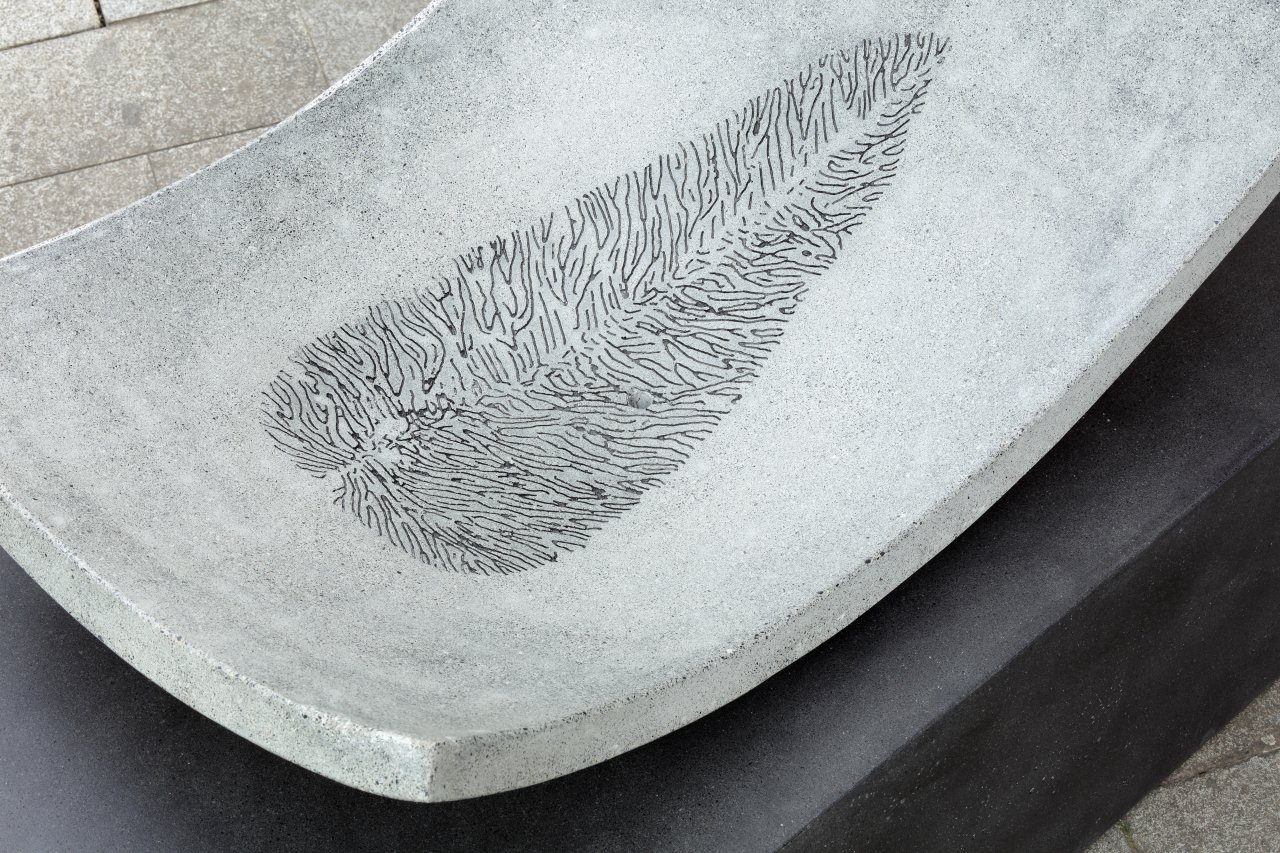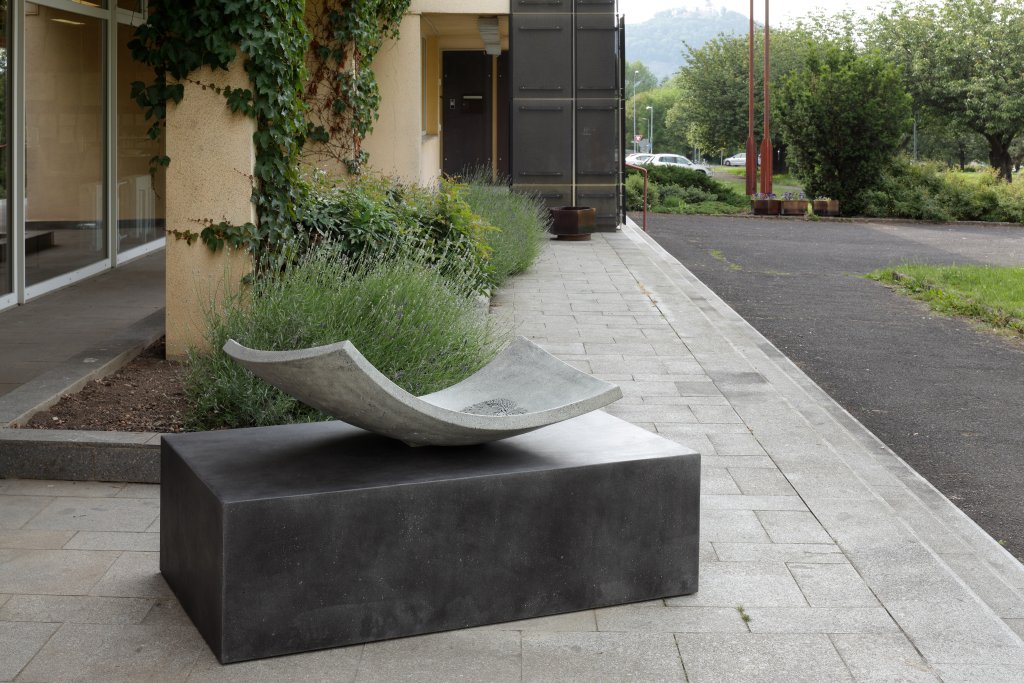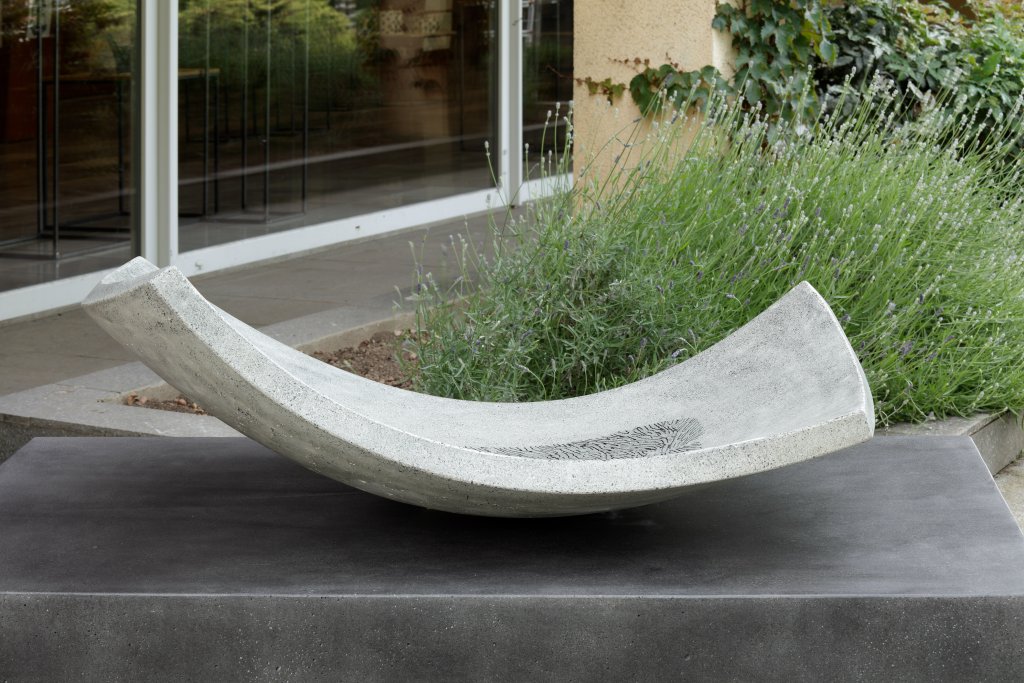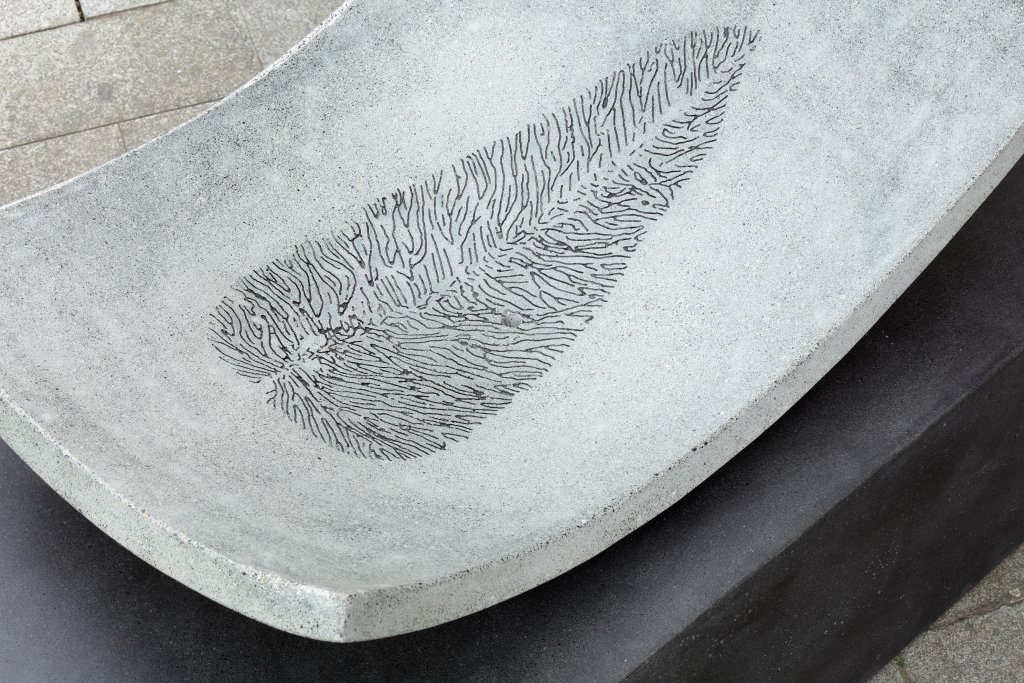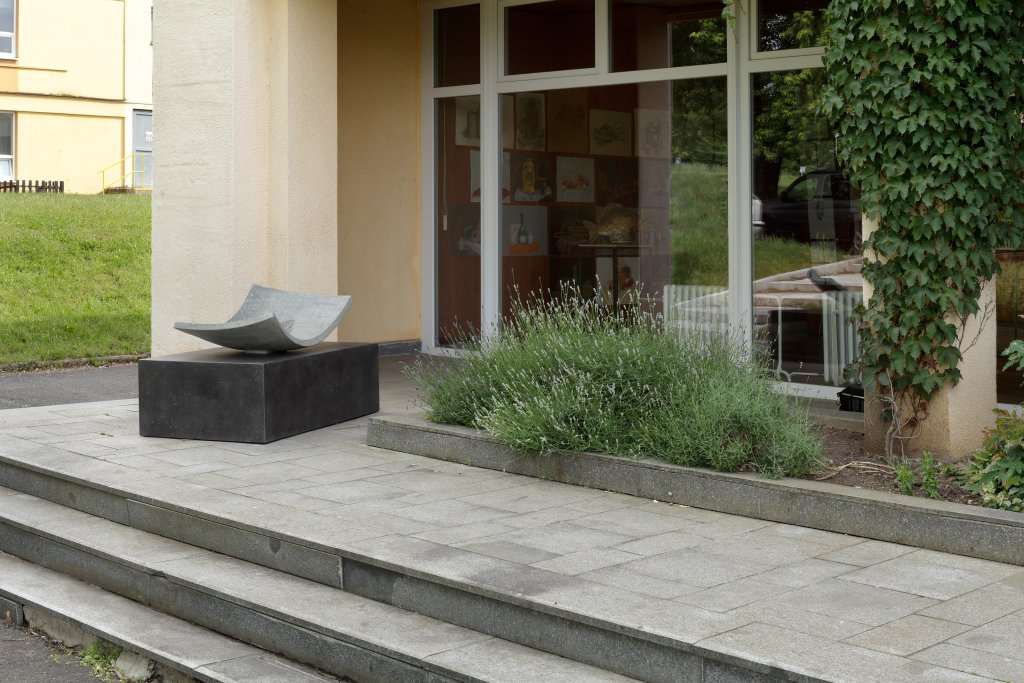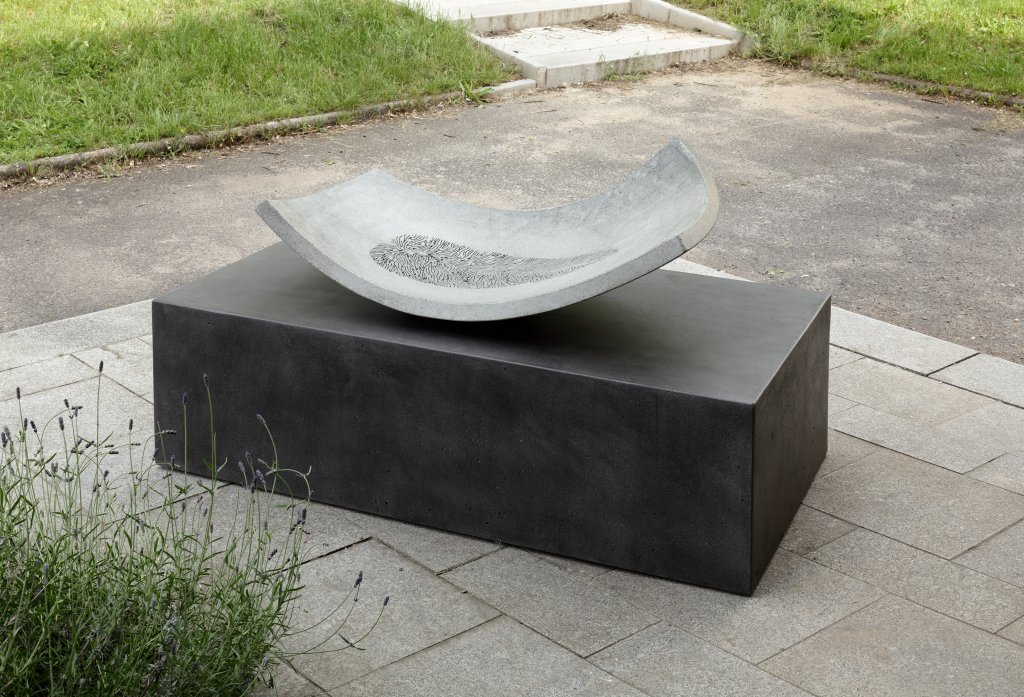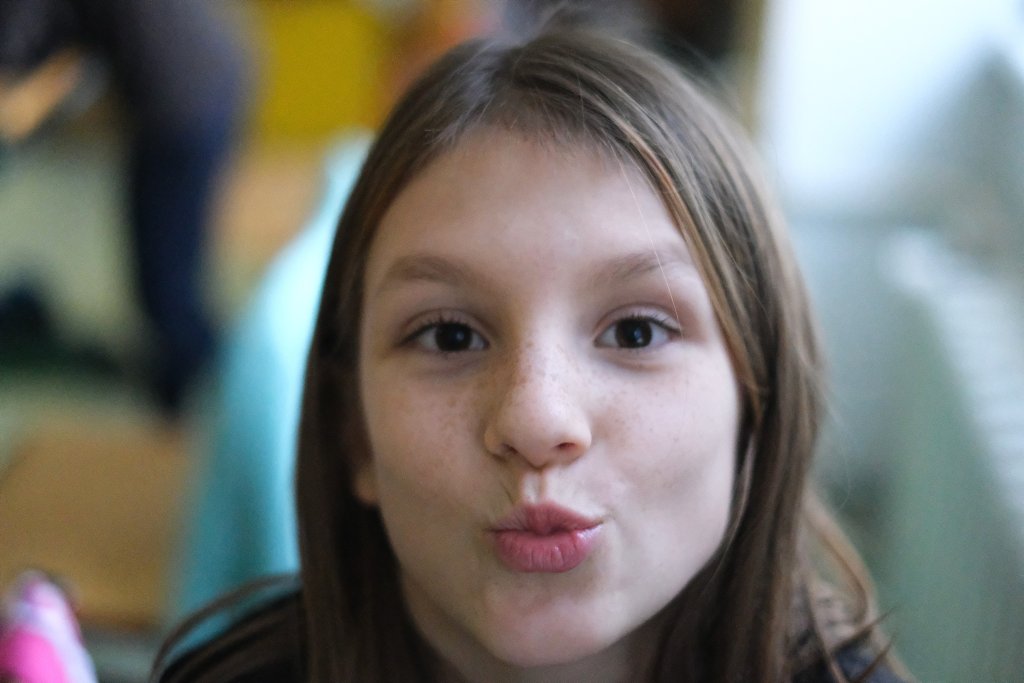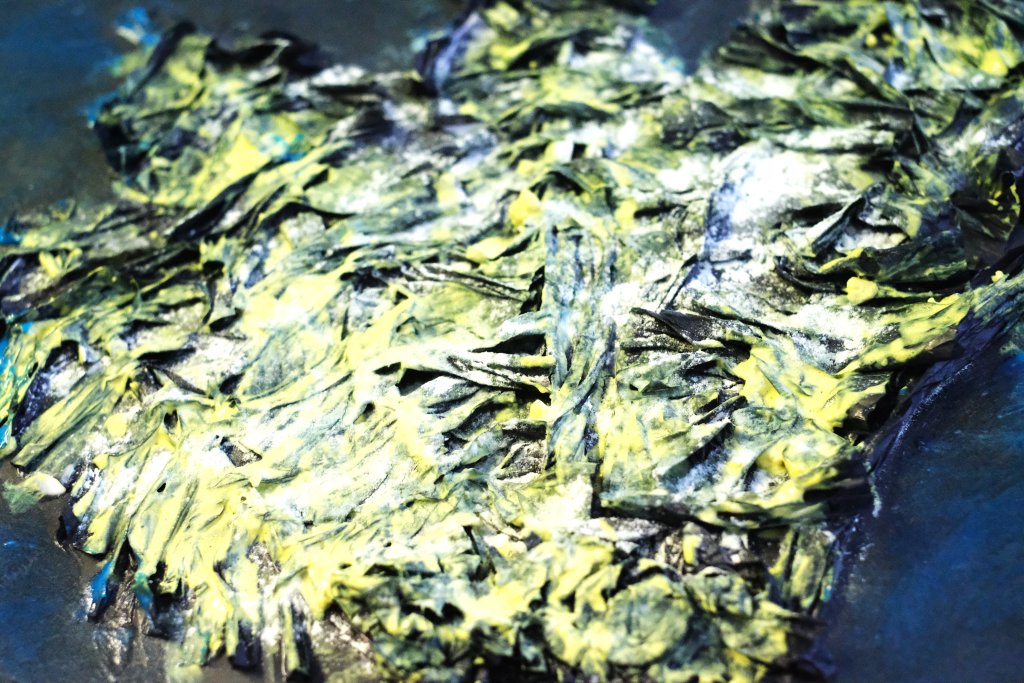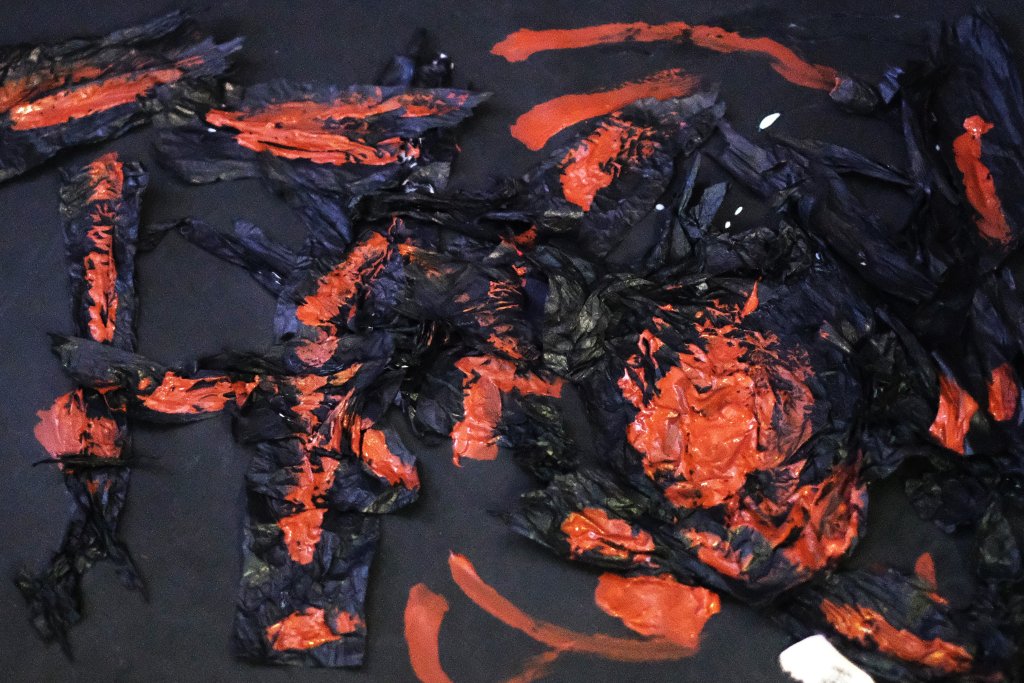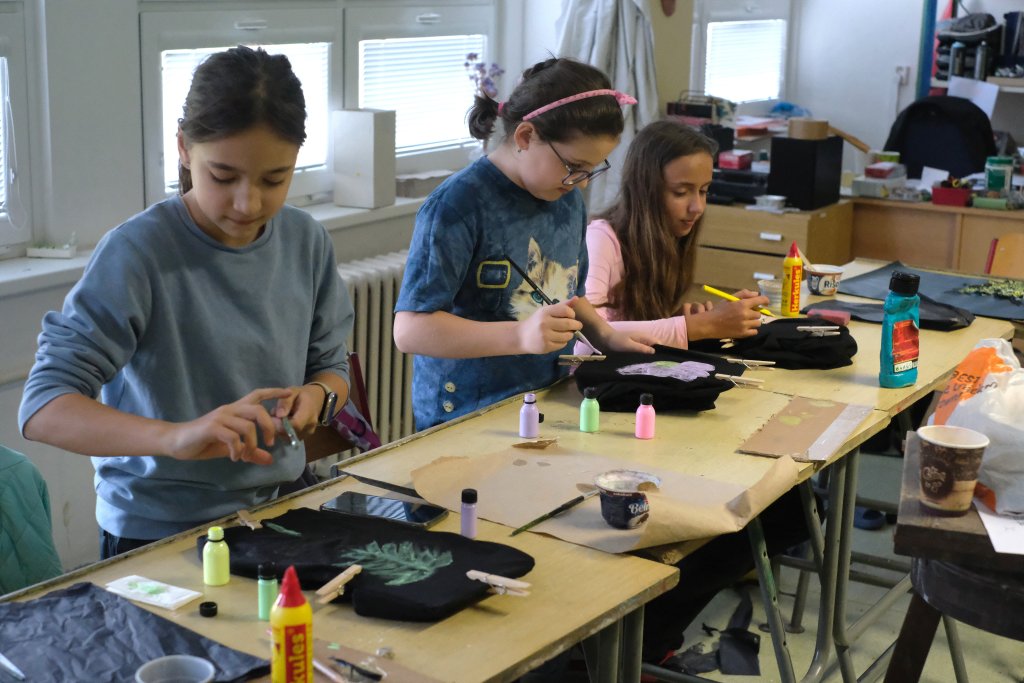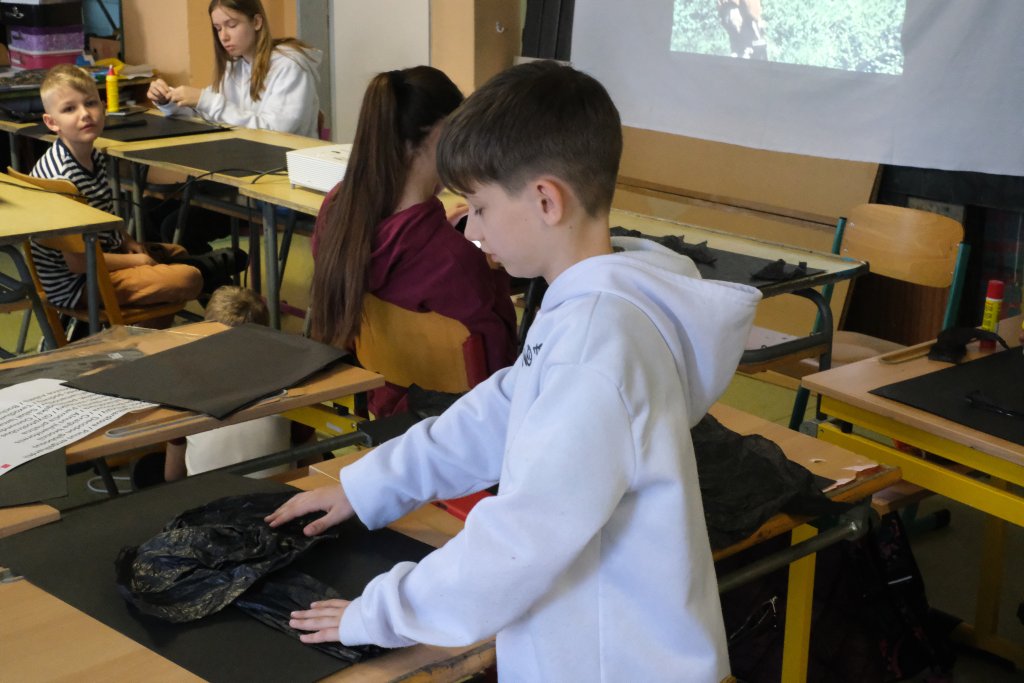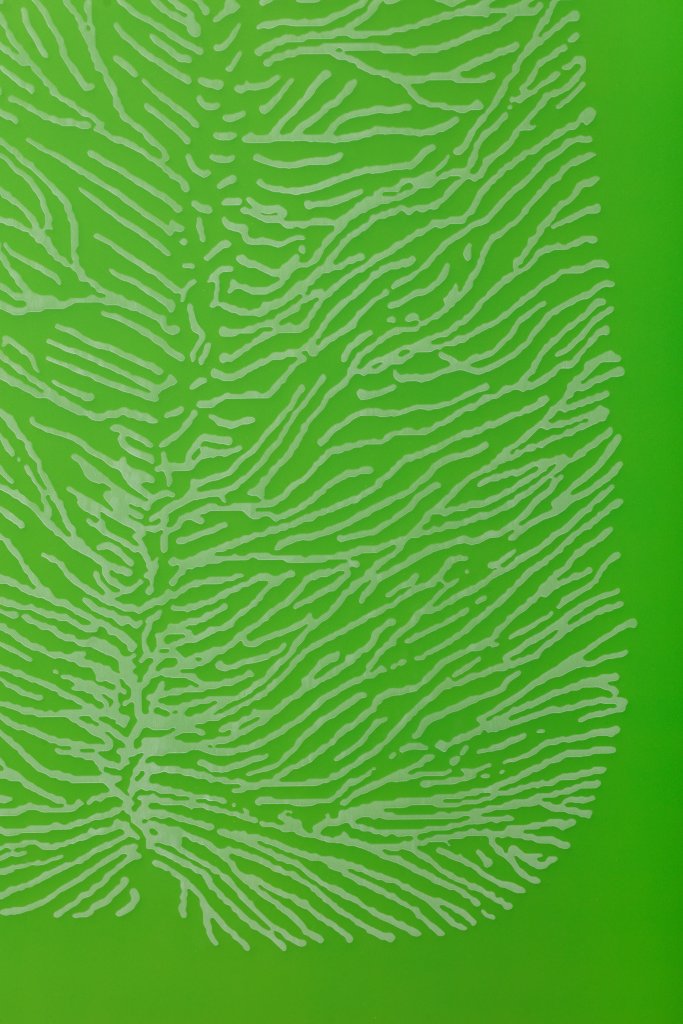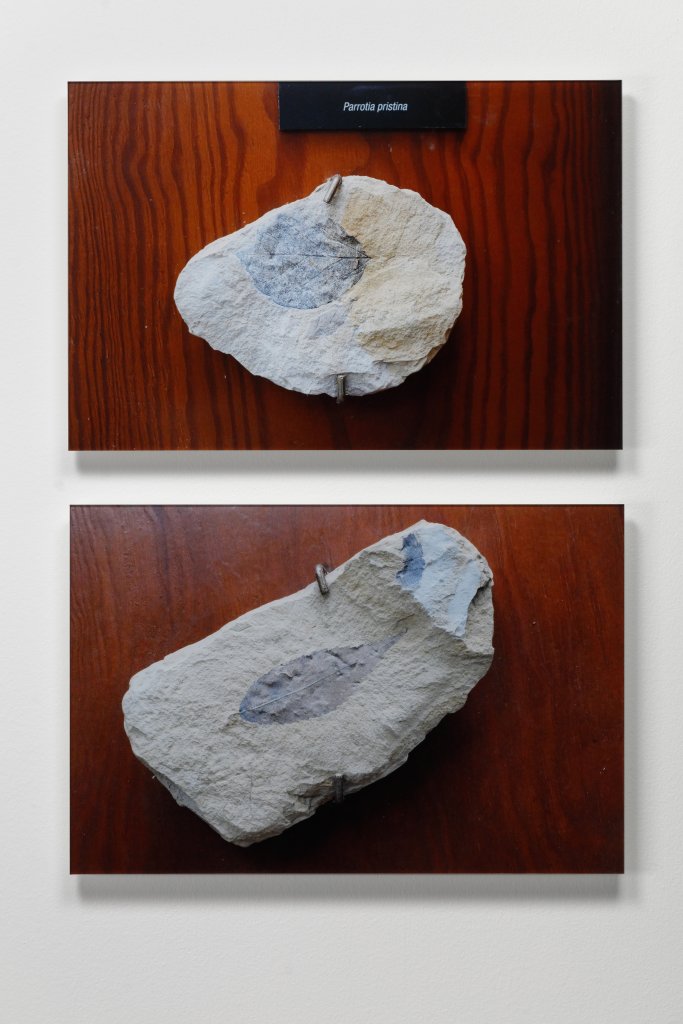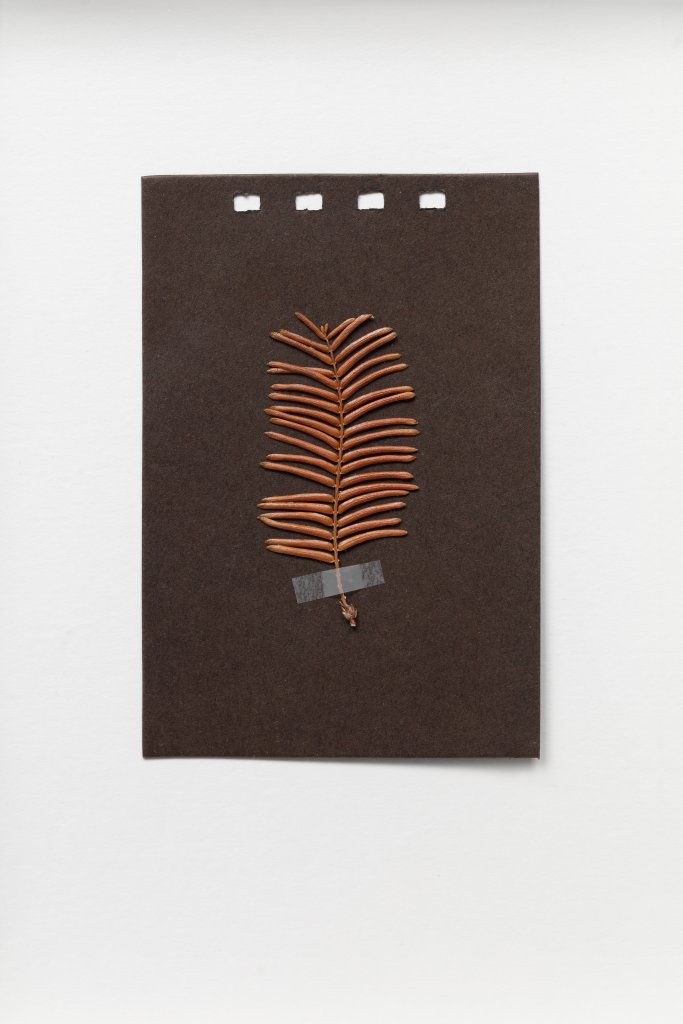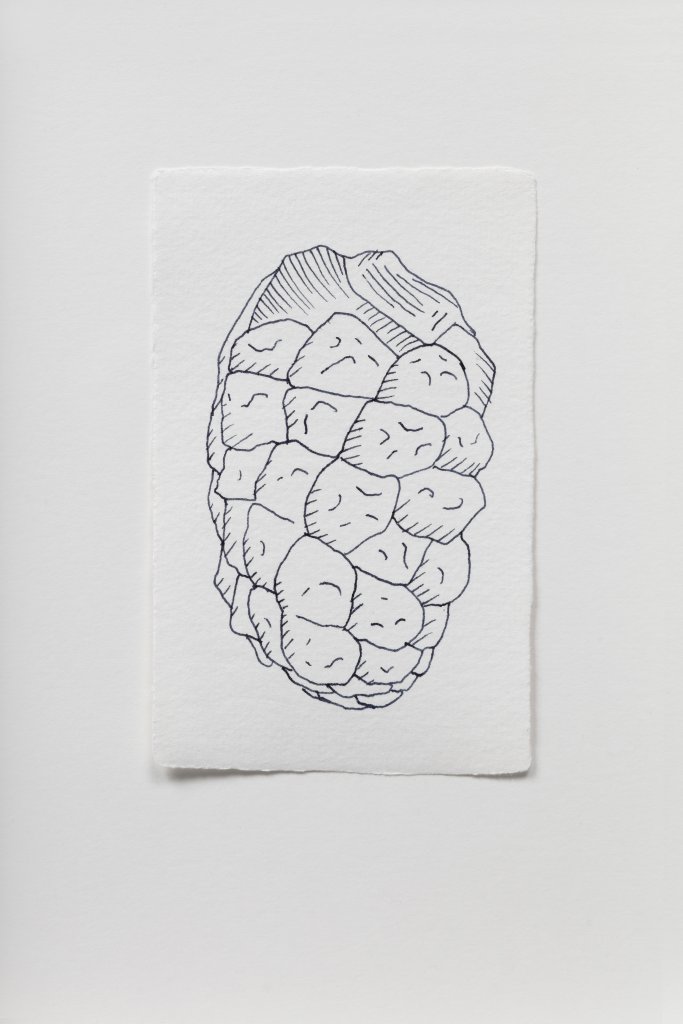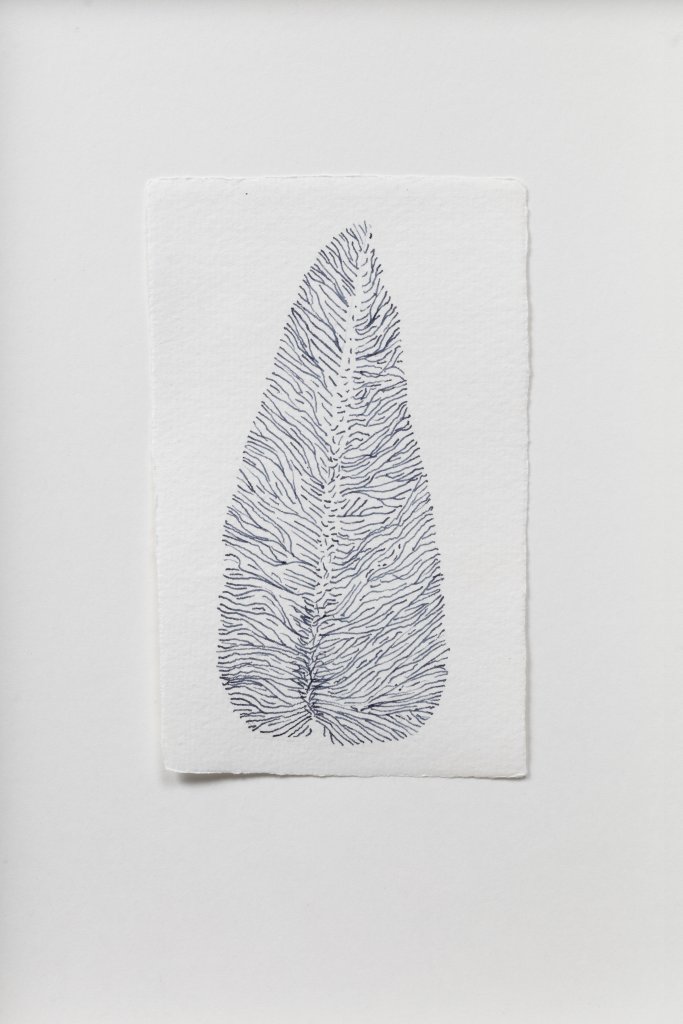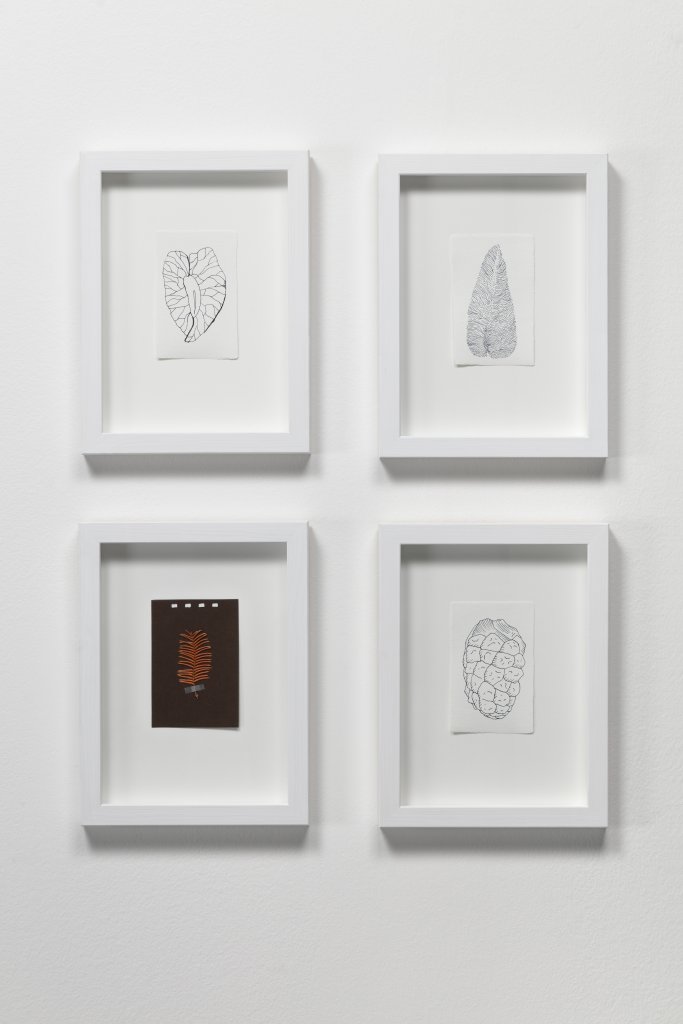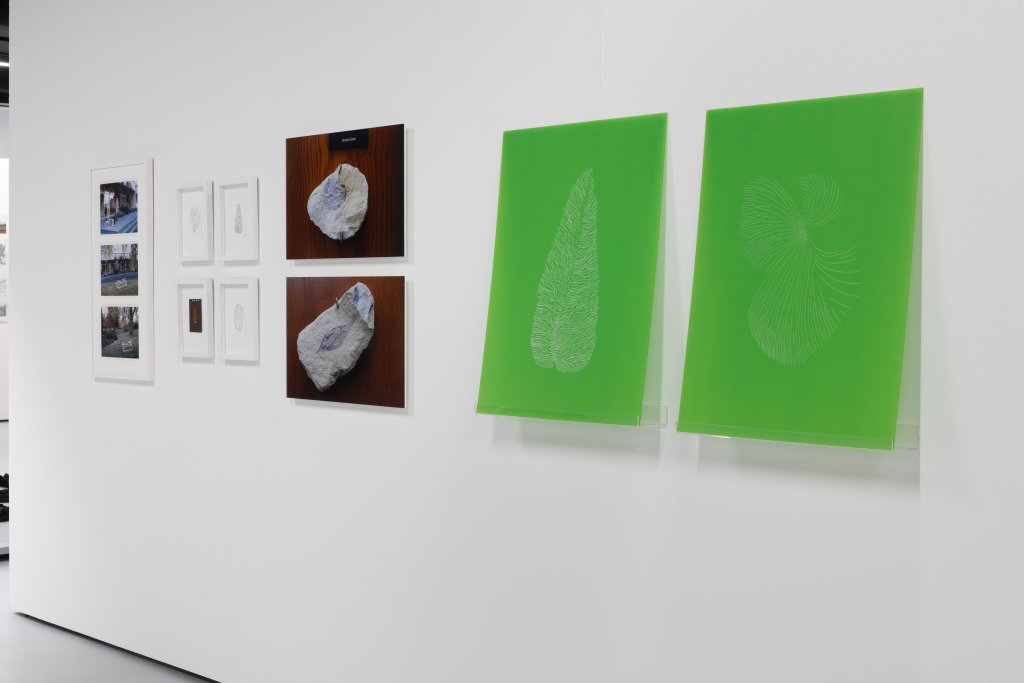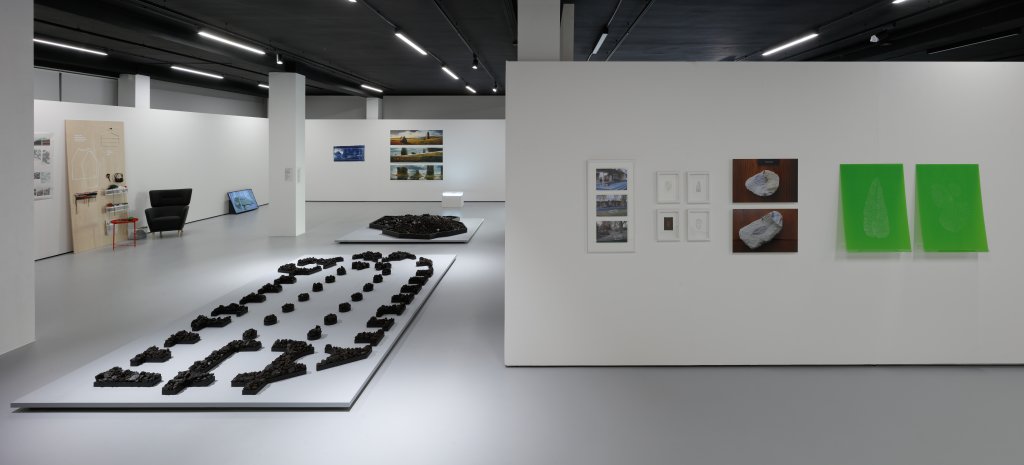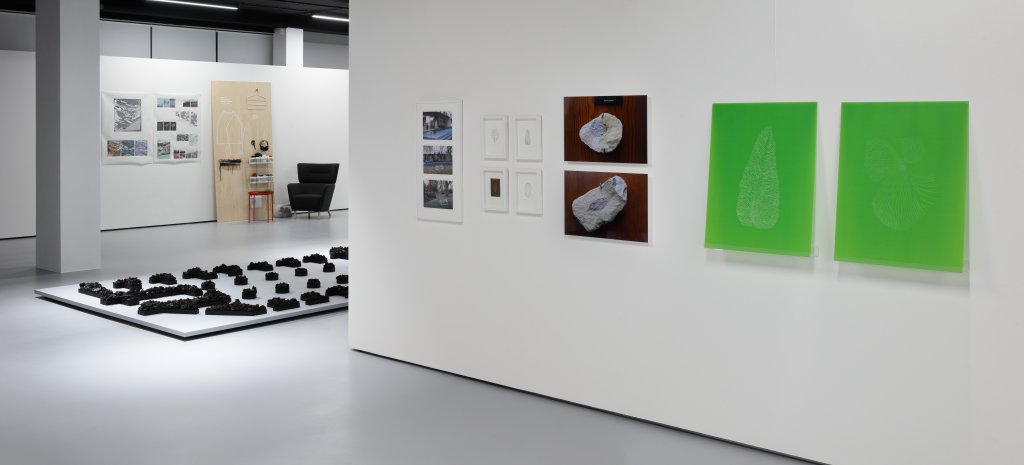ARTWORK IN PUBLIC SPACE
THE WORKSHOP “JOURNEY TO PREHISTORY”
Workshop realized as part of the work Mostecká Archa by Zdena Kolečková for and in collaboration with the Art School of Most. The workshop consisted of a trip to the Botanical Garden in Teplice, where we visited an exhibition dedicated to the Tertiary landscape and plants of the Podkrušnohorská Basin, an excursion to the House of Arts in Ústí nad Labem, and a visit to the Gardening of Soul exhibition. Activities included creating relief prints inspired by long-extinct plant species and whatever else came to mind, painting on textiles, and photographic records of our joint journey into the prehistory of the city of Most and beyond.
EXHIBITION AT THE HOUSE OF ART IN ÚSTÍ NAD LABEM
The City of Most Ark 2023/2024
spatial installation, concrete, coal
The basic shape of the object/sculpture is based on the symbiosis of two geometric bodies, essentially one static block and the associated second “block”, which is bent and dynamized. The lower anchoring shape represents a sturdy base, a solid starting point, the upper one evokes an ephemeral element as if unfurled by the wind – a thin sheet of paper in a standard format covered with a linear drawing. Its motif refers to the fossilised leaves, fruits, seeds and bark of the tertiary plants that formed the lignite coal from Most. The sculpture will be cast in concrete – the same material used to construct almost the entire new Most in the recent past after the historic medieval core of the city irrevocably gave way to the coal mining. Concrete itself symbolically contains the element of the metamorphosis of one material into another. Like coal, which was created by the transformation of plants into minerals, the solid and form-accurately replicating the original cast concrete reflects a story of transformation, where the combination of partial material starting points yields a unique composite surplus value. The surface, into which the motif of Tertiary plants is engraved, symbolically forms a mixture of concrete and coal dust, allowing the effect of “coal sgraffito” to be capitalised upon and to “scratch” through history to its own roots.
The motif of a plant fragment recorded on a seemingly wind-blown form of an undulating concrete block, is at the same time based on the basic shape of the prefabricated houses of the Most housing estates.
From the above mentioned aspects, the project concept creates a backward storyline from the Anthropocene present and the recent industrial past towards the mysterious ancient age of lakes, swamps and luminous marshes that filled the area of today’s Most before the first beginnings of human civilization. The motif of a sheet of paper with a scientific palaeobotanical illustration also refers to the exploratory activities of German Romantic thinkers, especially Alexander von Humboldt, who repeatedly returned to the submontane areas to discover local endemics and to draw strength from the thermal springs of Teplice.
The object is created in partnership with the Elementary School of Art in Most, and therefore its size takes into account the scale of the child’s figure and adapts to the perspective of the child’s eyes. In cooperation with this educational institution, a series of workshops will also be held focusing on the realisation of children’s creative projects.
